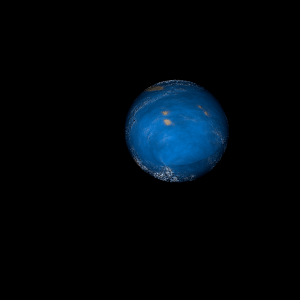|
|
Space Astro
|
Info for exoplanet "Hitsu Bibyu-gyo"
| Scientific (actual) data |
|---|
| Name | GJ 3293 e |
| Planet status | Confirmed |
| Mass sini | 0.0103 |
| Orbital period | 13.2543 |
| Semi major axis | 0.0821 |
| Orbit eccentricity | 0.21 |
| Discovered | 2017 |
| Updated | 2017-03-17 |
| K | 1.66 |
| Publication | Published in a refereed paper |
| Detection type | Radial Velocity |
| Mass measurement type | Radial Velocity |
| Star name | GJ 3293 |
| Right ascension | 67.15° |
| Declination | -25.17° |
| Mag v | 11.96 |
| Star distance | 17.9 |
| Star metallicity | 0.02 |
| Star mass | 0.42 |
| Star radius | 0.404 |
| Star sp type | M2.5 |
| Star temperature | 3466 |
| Wikipedia article | GJ 3293 e |
Back
| |
| Fictional info (?) |
|---|
| Suggested name | Hitsu Bibyu-gyo |
| Planet type | Terrestrial |
| It is the coldest planetary atmosphere in its solar system, with a minimum temperature of 68°K (-205°C), and has a complex, layered cloud structure with helium thought to make up the lowest clouds, and nitrogen the uppermost layer of clouds.
Having almost no atmosphere to retain heat, it has surface temperatures that vary diurnally more than on any other planet in its solar system, ranging from 170°K (-103°C) at night to 455°K (182°C) during the day across the equatorial regions. |
| Atmosphere | Nitrogen | 37% |
| Helium | 33% |
| Formaldehyde | 18% |
| Xenon | 11% |
| Atmospheric pressure | 26 bar |
 |
| No known satellites |
| Google search for Hitsu bibyu-gyo |
|
Website by Joachim Michaelis
|
|
|
|